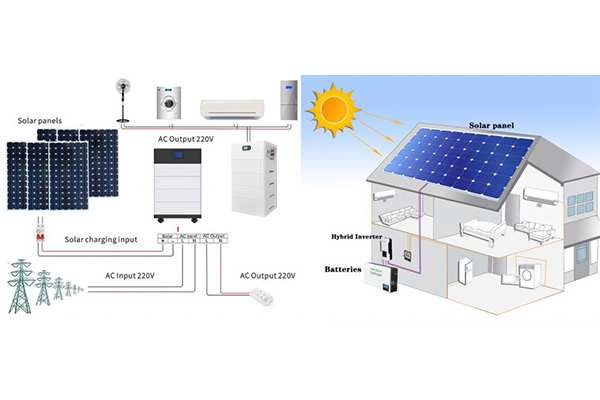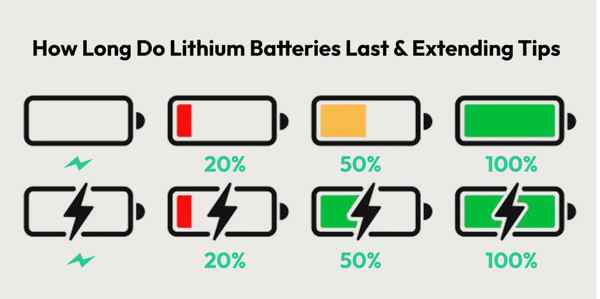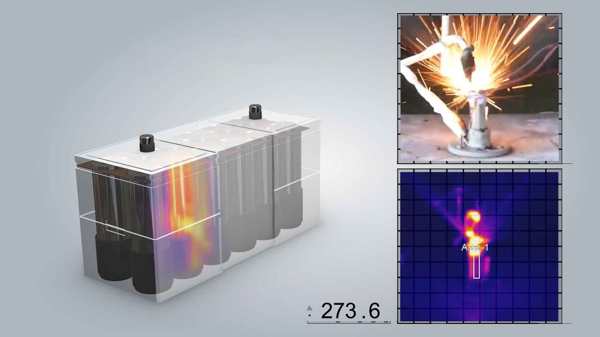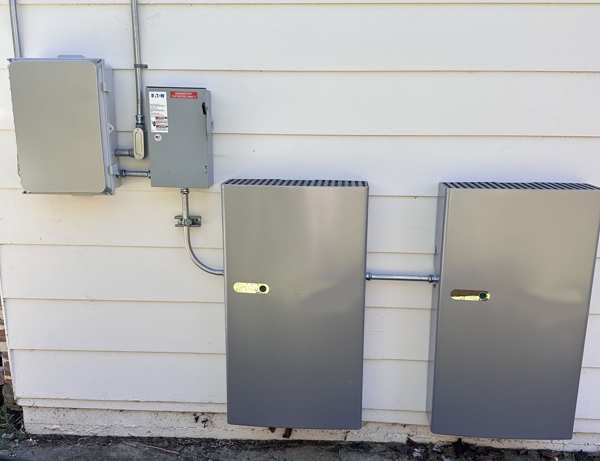배터리를 저장하는 가장 좋은 방법은 무엇입니까??
태양 전지판을위한 대형 에너지 저장 시스템이 있든 몇 개의 여분의 배터리가 있는지 여부, 올바르게 저장하는 방법을 아는 것이 중요합니다. 적절한 보관은 단순한 단순한 것이 아닙니다; 배터리의 수명을 극대화하고 안전을 보장하는 데 중요한 관행입니다.. 그래서, 이 강력한 기술을 저장하는 가장 좋은 방법은 무엇입니까??
최신 리튬 배터리를 장기간 저장하는 가장 좋은 방법은 시원합니다., 건조한 장소, 부분적으로 충전 상태로 (이상적으로는 40% 그리고 60%). 그들은 물리적으로 손상으로부터 보호되어야하며 가연성 재료로부터 멀리 떨어져 있어야합니다.. 가정 에너지 시스템의 경우, 전문가, 벽 마운트 배터리와 같은 밀폐 된 솔루션은 완벽한 것을 제공합니다, 안전한, 기후 관리 저장 환경.

~에 Gycx 솔라, 안전하고 내구성있는 에너지 저장 솔루션을 설계하는 것은 우리가하는 일의 핵심입니다.. 그 중 핵심 부분은 배터리가 첫날부터 최적의 환경에 설치되어 "저장된"것을 보장하는 것입니다.. 배터리 저장 및 사용에 대한 몇 가지 일반적인 질문을 살펴 보겠습니다..
10kW 배터리가 집을 운영 할 것입니다?
10kWh 배터리는 가정 에너지 저장에 매우 인기있는 크기입니다., 그러나 그것은 당신의 힘을 발휘할 수 있습니다 전체 집? 좋은 질문입니다, 그러나 그 대답은 "10kw" 그리고 당신이 달리는 것을 의미합니다.
첫 번째, 용어를 명확히하겠습니다: 배터리 용량은 측정됩니다 킬로와트시 (kWh), 이것은 저장된 에너지의 양입니다. "10kW 배터리" 거의 항상 a를 말합니다 10KWH 배터리. 10kWh 배터리가 실행될 수 있습니다 필수 부분 집의 (조명처럼, 냉장고, 인터넷) 많은 시간 또는 하루 종일, 전원을 켜려고하면 매우 빨리 배수 될 것입니다. 전체 집, 특히 중앙 에어컨과 같은 무거운 하중이 있습니다. 런타임은 주어진 순간에 집의 전력 소비에 전적으로 의존합니다..

더 깊이 다이빙하십시오: 그것은 당신의 부하에 관한 모든 것입니다
수학을 봅시다: 실행 시간 (시간) = 배터리 용량 (kWh) / 평균 부하 (kW).
- 필수적인 실행: 냉장고와 같은 필수 장치에만 전원을 공급하는 경우, 일부 LED 조명, Wi-Fi 라우터, 그리고 팬, 총 연속 하중이 주변에있을 수 있습니다 500 와트 (0.5 kW).
- 계산: 10 kWh / 0.5 kw = 20 시간 런타임.
- 무거운 짐을 실행합니다: 지금, 에어컨과 같은 주요 기기를 추가해 봅시다, 이것은 싱가포르와 같은 뜨거운 기후에서 필수적입니다. 중앙 AC 장치가 그릴 수 있습니다 3-5 자체적으로 KW. AC 달리기가있는 총 가구 부하가 4 kW:
- 계산: 10 kWh / 4 kw = 2.5 시간 런타임.
이것은 단일 10kWh 배터리가 필수 전력으로 중단을 겪는 데 환상적인 이유를 보여줍니다." 백업 모든 것을 정상적으로 실행하려는 경우. 이것은 확장 가능한 시스템의 아름다움입니다, 우리처럼 벽 마운트 배터리 솔루션, 들어온다. 많은 주택 소유자가 2 개의 10kWh 장치를 설치하기로 선택합니다 (20kWh의 저장) 오랜 기간 동안 진정한 재택 백업을 달성합니다. Gycx Solar에서, 우리는 당신의 백업 기대치를 진정으로 충족시키는 시스템을 크기를 조정하는 데 도움이되는 상세한 부하 분석을 수행합니다..
새 배터리가 얼마나 오래 사용되지 않습니까??
새 배터리를 구입했습니다, 그러나 아마도 당신의 프로젝트가 지연되었을 것입니다. 충전을 잃거나 나빠지는 것에 대해 걱정하기 전에 얼마나 오래 사용되지 않은 선반에 앉을 수 있습니까?? 배터리의 저장 수명은 화학 및 저장 조건에 크게 의존합니다..
새로운, 고품질 리튬 배터리 (LFP와 마찬가지로 - 리튬 철 포스페이트) 아주 오랫동안 사용하지 않을 수 있습니다, 자주 1 년 이상, 경우 올바르게 저장됩니다. 열쇠는 a에 저장하는 것입니다 부분적인 전하 상태 (약 40-60%) 시원하게, 건조한 장소. 현대 리튬 화학의 매우 낮은자가 차지 속도 덕분에 가능합니다., 일반적으로 전용입니다 1-3% 매월.

더 깊이 다이빙하십시오: 자체 전하 및 이상적인 저장 조건
유효 기간에 대해 알아야 할 사항은 다음과 같습니다:
- 자제력: 내부 화학 반응으로 인해 모든 배터리는 시간이 지남에 따라 천천히 충전됩니다.. 최신 LFP 배터리 용, 이 과정은 엄청나게 느립니다. 대조적으로, 오래된 납산 배터리를 잃을 수 있습니다 5-15% 매월 청구, 재충전 없이는 거의 오랫동안 저장 될 수 없음을 의미합니다..
- 이상적인 저장 비용 (40-60%): 리튬 배터리를 보관합니다 100% 몇 달 동안 내부 구성 요소에 스트레스를주고 노화를 가속화합니다.. 그것을 보관합니다 0% 더 위험합니다, 자가 샤워가 전압을 절대 복구 할 수없는 낮은 레벨로 떨어 뜨릴 수 있으므로. "반쯤 가득 차" 상태는 안정입니다, 장기 건강을위한 스트레스가 낮은 스위트 스팟.
- 온도가 중요합니다: 자가 혐의율, 그리고 더 중요한 것은, 영구 용량 손실 속도 (달력 노화), 열에 의해 가속됩니다. 멋진 환경에 배터리를 보관합니다 (이상적으로는 15-25 ° C 또는 59-77 ° F입니다) 사용하지 않는 동안 건강을 보존하기 위해 할 수있는 가장 효과적인 일 중 하나입니다..
- 실용적인 조언: 1 년 이상 리튬 배터리를 저장 해야하는 경우, 모든 요금을 확인하는 것이 좋습니다 6-12 몇 달 동안 다시 올라갑니다 50% 필요한 경우 레벨.
저장하면 배터리가 서로 닿을 수 있습니다?
이것은 매우 중요한 안전 문제입니다. 여러 배터리를 보관할 때, 특히 느슨한 세포, 상자 나 선반에서 서로 만지게 할 수 있습니까??
아니요, 느슨한 배터리는 터미널이 서로 또는 다른 전도성 금속 물체를 만질 수있는 방식으로 저장해서는 안됩니다.. 이것은 단락을 만들 수 있습니다, 배터리가 빠르게 배출됩니다, 과열, 그리고 잠재적으로 누출되거나 불을 피우십시오. 시스템 배터리 용, 가정 에너지 저장 시스템에 사용되는 모듈처럼, 그들은 항상 목적으로 지어야합니다 랙 또는 인클로저 (벽 마운트 배터리 장치처럼) 그것은 그들을 안전하고 적절하게 간격하게 유지합니다.

더 깊이 다이빙하십시오: 안전한 분리 및 주택 보장
다른 시나리오에 대한 세부 사항을 살펴 보겠습니다:
- 느슨한 세포의 경우 (AA처럼, 18650): 주요 위험은 긍정적이고 부정적인 터미널이 만지는 것입니다., 직접 또는 키나 동전과 같은 다른 금속 물체를 통해. 이것은 전류가 흐르는 직접 경로를 만듭니다, 강렬한 열 발생. 항상 느슨한 셀을 원래 포장에 보관하십시오, 플라스틱 배터리 케이스에서, 또는 터미널로 전기 테이프로 덮여.
- 시스템 배터리 용 (모듈 식 베스1. ): 이것은 전문 인클로저가 들어오는 곳입니다. GYCX Solar에서 사용하는 모듈 식 리튬 배터리는 함께 가깝게 설치되도록 설계되었습니다., 그러나 항상 안전을 보장하는 시스템 내에 있습니다. 전문가 벽 마운트 배터리 인클로저 또는 a 리튬 배터리 랙 몇 가지 중요한 기능을 제공합니다:
- 단락을 방지합니다: 각 배터리 모듈을 제자리에 단단히 고정합니다, 터미널이 실수로 서로 접촉하거나 인클로저의 전도성 부분과 접촉 할 수 없습니다..
- 적절한 공기 흐름을 보장합니다: 인클로저는 공기 순환 모듈간에 특정 간격을 유지하도록 설계되었습니다., 이는 열 축적을 냉각시키고 방지하는 데 필수적입니다.
- 물리적 보호를 제공합니다: 배터리 모듈이 부딪치지 않도록 보호합니다, 빵구 내는, 또는 그렇지 않으면 손상되었습니다.
GYCX 태양 이야기: "클라이언트를위한 다중 모듈 배터리 시스템을 설계 할 때, 배터리 만 공급하지 않습니다. 우리는 전체를 공급합니다, 엔지니어링 된 솔루션, 전문 선반 또는 벽 마운트 캐비닛을 포함합니다. 이를 통해 배터리는 결코 '만지지 않는'것이지 않도록합니다. 안전과 장수를 위해 설계된 시스템에 안전하게 보관되어 있습니다."
태양 전지판이 달린 배터리를 사용하는 것이 가치가 있습니까??
태양 전지판의 가치를 보았습니다, 하지만 배터리의 추가 비용에 대해 울타리에있을 수도 있습니다.. 태양열 설치에 에너지 저장을 추가하는 것이 정말 가치가 있습니까??
예, 대부분의 주택 소유자와 비즈니스, 태양 전지판 시스템에 배터리를 추가하는 것은 절대적으로 가치가 있습니다.. 배터리는 태양열 투자의 실제 잠재력을 잠금 해제합니다.. 그것은 당신을 허용합니다 과도한 태양 에너지를 보관하십시오 밤이나 흐린 날에 사용하기 위해 맑은 낮 시간 동안 생성. 이것은 제공합니다 24/7 깨끗한 소스의 전원, 그리드 중단 중 백업 보안, 그리고 당신을 허용합니다 금융 저축을 극대화하십시오 유틸리티에서 구매 해야하는 전기량을 최소화하여.

더 깊이 다이빙하십시오: 왜 태양 + 스토리지는 궁극적 인 조합입니다
태양 전지판과 배터리를 페어링하면 시스템이 간단한 에너지 발전기에서 포괄적 인 에너지 관리 솔루션으로 변환합니다..
- 태양 자체 소비를 극대화하십시오: 이것이 가장 큰 이점입니다. 배터리없이, 낮 동안 생성하는 과도한 태양 광 발전은 그리드로 전송됩니다.. 많은 곳에서, 이 수출 전력에 대한 크레딧은 거의 없습니다. 그런 다음 밤에는 그리드에서 비싼 전기를 구입해야합니다.. 배터리를 사용하면 자신의 에너지를 저장하고 나중에 사용할 수 있습니다., 훨씬 더 가치가 있습니다. 이것은 싱가포르와 같은 전기 비용이 높은 지역에서 특히 그렇습니다..
- 에너지 탄력성 및 백업력: 표준 그리드 타이어 태양계는 합법적으로 정전 중에 폐쇄되어야합니다.. 하지만, 우리와 같은 배터리 시스템이있을 때 벽 마운트 배터리 솔루션, 저장된 에너지를 사용하여 그리드에서 안전하게 분리하고 집에 계속 전원을 공급할 수 있습니다.. 태양 전지판은 하루 종일 배터리를 계속 재충전 할 수 있습니다., 연장 중단 중에 잠재적으로 무기한 전원 공급 장치를 제공.
- 더 큰 에너지 독립성: 유틸리티 그리드에 덜 의존하고 자신의 전원 공급 장치를 제어하십시오.. 이것은 예측할 수없는 그리드 고장과 전기 가격 상승으로부터 당신을 단열시킵니다..
- 환경에 미치는 영향: 더 많은 깨끗한 태양 에너지를 저장하고 사용하여, 화석 연료 생성 그리드 파워에 대한 의존도를 더욱 줄입니다, 긍정적 인 환경 영향을 극대화합니다.
태양계는 에너지를 생성합니다; 배터리 저장 시스템을 사용하면 언제 어떻게 사용하는지 결정할 수 있습니다.. Gycx Solar에서, 우리는이 조합이 진정한 에너지 자유의 열쇠라고 믿습니다..
배터리를 올바르게 보관하십시오, 부분 요금으로 건조한 장소 - 건강의 기본입니다.. 가정 에너지 시스템의 경우, 전문가 벽 마운트 배터리 또는 랙 시스템은 이상을 제공합니다, 안전한, 조직화 된 솔루션. 이 고급 스토리지는 태양 전지판 시스템을 진정으로 가치있게 만드는 것입니다., 그것을 a로 변환합니다 24/7 깨끗한 원천, 가정이나 사업을위한 신뢰할 수있는 에너지.
벽 마운트 배터리 제품에 대해 궁금한 점이 있거나 완전한 태양 광 및 저장 솔루션이 귀하에게 도움이되는 방법을 탐색하려면, GYCX Solar의 우리 팀은 전문가지도를 제공하기 위해 여기에 있습니다.. 상담을 위해 문의하십시오!
BESS의 개념을 이해하면 배터리 관련 데이터 개념을 더 잘 비교하고 이해하는 데 도움이됩니다.. 이것은 회사의 요구에 가장 적합한 제품을 선택하는 데 도움이됩니다.. ↩
